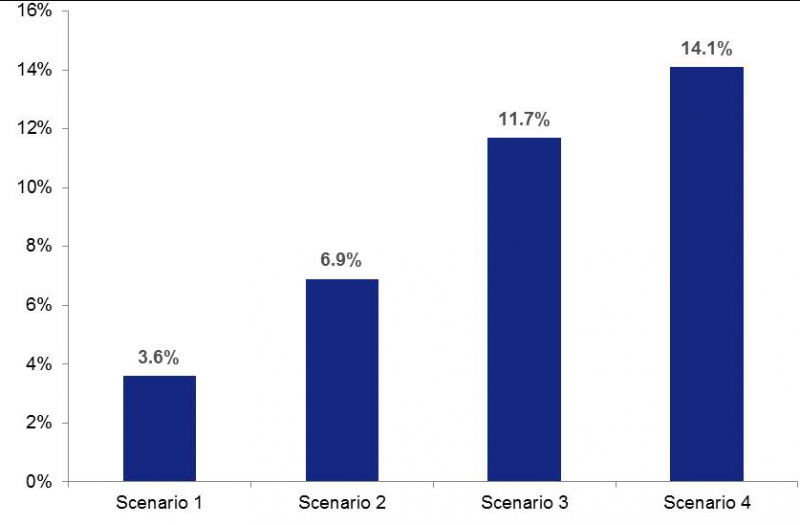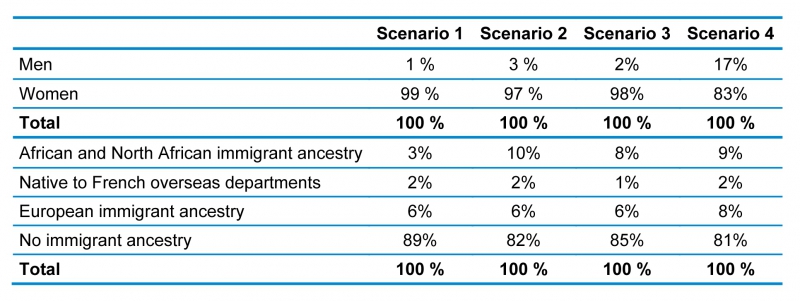
The fight against discrimination in liberal Western democracies built on openness, diversity and equality before the law is hardly anything new. Culturally diverse countries like France, Germany, the UK and the US are resoundingly committed to measures promoting the equality of all their citizens.
France, for its part, enshrined this principle in its 1946 constitution, proclaiming the French republic “…ensures equality of all citizens before the law without any distinction of origin, race or religion.”
But despite this and measures taken over the years to guarantee the rights of its citizens, it is widely acknowledged that discrimination in France, whether based on ethnicity, religion or gender, still remains widespread today, not least in the workplace.
In October 2015, the French think tank Institut Montaigne carried out a study that showed men perceived to be Muslim by employers are up to four times less likely to land a job interview than fellow candidates seen as Christian.
This dire state of affairs was recently confirmed in the results of a poll carried out by the independent French authority in charge of ensuring the rights of citizens are upheld, Le Défenseur des Droits.
Along with acknowledgement of this predicament, there is an increasing awareness that the economic costs associated with such inequality are high indeed. But how high? For the first time in the country[1] France Stratégie has undertaken a detailed study to answer this question – and the results speak volumes.
Rather than drawing on a survey or testing, the 100-page-plus report, Le coût économique des discriminations (The Economic Cost of Discrimination), measures the differences that exist between groups in the workplace that are potentially discriminated against and a reference population. It does so while controlling for characteristics such as level of education and social class (the differences measured are therefore by definition unexplained).
The report is part of a broader push by the French government to raise awareness among companies and the general public of the problem of widespread discrimination in the job market. “France Stratégie’s work sheds light on how totally irrational discrimination is,” said Myriam El Khomri, the Minister of Labour, herself born in Rabat to a Moroccan father and French mother. “It reinforces the legitimacy of our fight against discrimination in the workplace.”
Starting with the premise that all groups in society hold the same potential, the authors point out the reference population for professionals in the top 10% of wage earners – i.e. white men – actually has less potential than groups suffering from discrimination, which in France are essentially women and French people whose parents are African immigrants. This is simply because as these latter groups are underrepresented, white men’s talents are overrepresented, driving down their average level of talent.
The study singles out four positive effects on the economy of reducing discrimination. First is increasing the chances for victims of discrimination of attaining high-paying jobs, in other words, closing wage gaps between different groups. Second entails boosting overall access to employment. Third is lessening the gap in working hours per week by fostering full-time work. And four consists of narrowing the differences in levels of education.
The authors then look at the impact of four scenarios involving different combinations of the various effects on the working population, which is divided into groups according to age, sex and parents’ country of origin. Scenario one concerns the high-level wages; two, the high-level wages plus the employment rate; three, the latter two effects plus working hours; and the last one groups all four effects.
They find the impact of any one of the four different scenarios on the economy over two decades would be nothing short of striking: scenario 2, for example, would add just under 7% of the 2015 GDP, or €150 billion (see graph below), to the economy. This amounts to an annual increase in GDP of 0.35%.
Impact of four scenarios on GDP

Note: Scenario 4, for example, includes closing wage gaps, increasing access to employment, boosting hours worked and reducing differences in education attained. It would add an estimated 14.1% to 2015 GDP.
Source: France Stratégie.
An estimated 97% of these gains would come from women’s participation in the labour market and a raise in their pay level. This is explained by the sheer number of women in the workforce combined with their overall disadvantaged working conditions – whether it involves earning less than men or working part-time more frequently because of family responsibilities. The consequence of this is the overwhelming contribution to GDP in every scenario comes from women (see table below).
Breakdown of percentage of effect on GDP in each scenario, by category of population

Note: Individuals aged 25 to 59, excluding immigrants. In Scenario 4, for example, 83% of the effect on GDP can be attributed to workplace gains made by women, as opposed to 17% by men.
Source: France Stratégie, based on 2005-14 employment surveys carried out by the French National Office of Statistics (Insee).
Indeed, the study details that according to the latest figures from Insee, after controlling for variables such as level of education, French women not descended from immigrants still earn a full 12% less than their male counterparts. The figure rises to 13% for French women descended from African and North African immigrants.
Men whose parents are immigrants from Africa and North Africa are also largely left by the wayside in the country’s job market: they have a 7% higher chance of being unemployed than white men with no direct immigrant ancestry.
The increase in GDP resulting from women and individuals with immigrant ancestry wielding more economic power would also generate additional government revenues in the form of income and corporate taxes, for example. It would also lead to reduced public expenditures on measures such as unemployment insurance. By way of example, the authors calculate that Scenario 2 would lead to a 2.0% increase in additional revenues and reduce government spending by 0.5%.
[1] The US paper, Hsieh, C. T., Hurst, E., Jones, C. I. and Klenow, P. J. (2012). “The allocation of talent and US economic growth”, Mimeo, Stanford University, klenow.com/HHJK.pdf, set a precedent of sorts by measuring the reduction in occupational barriers for women and blacks in the US from 1960 to 2010. It found this reduction could “explain one-quarter of aggregate growth in GDP per person” over the period.




